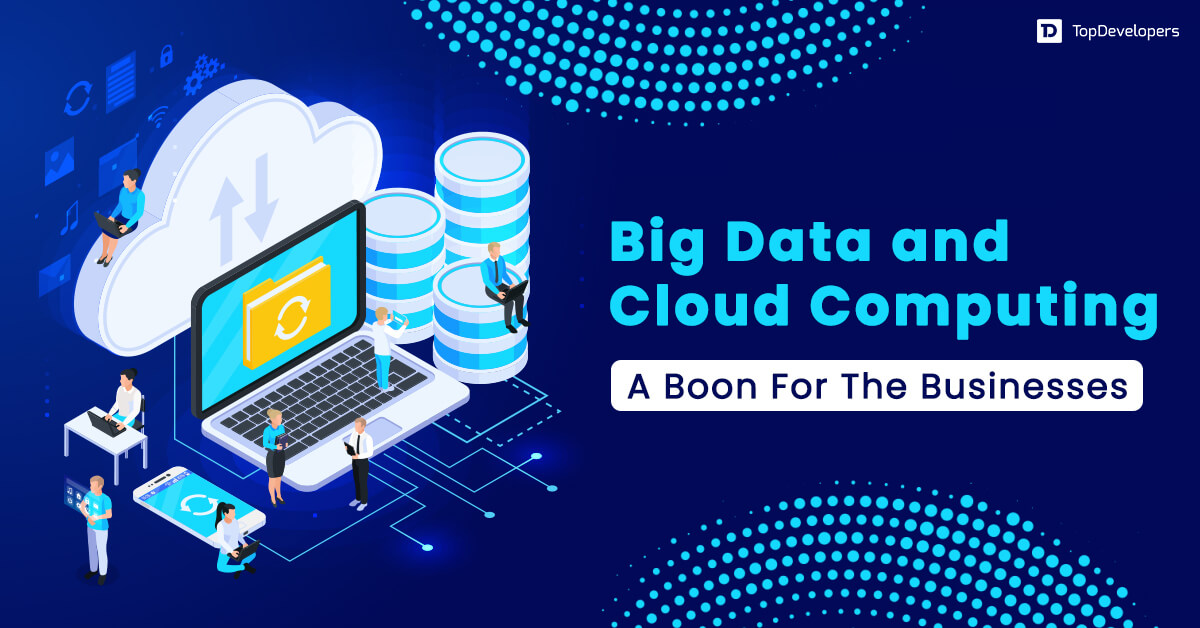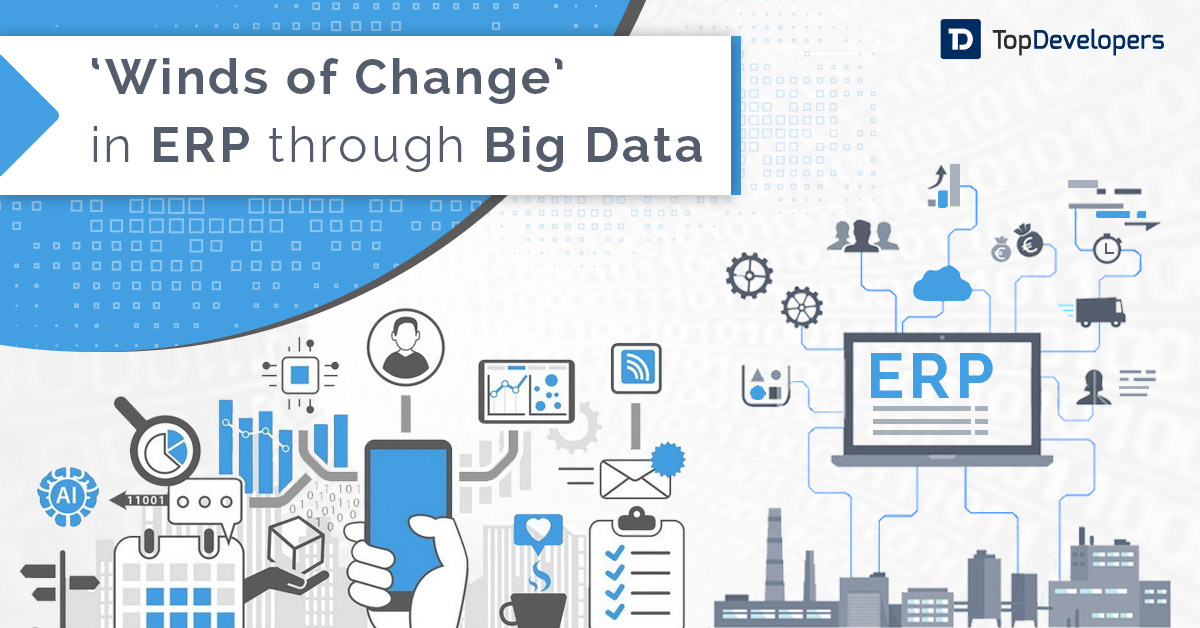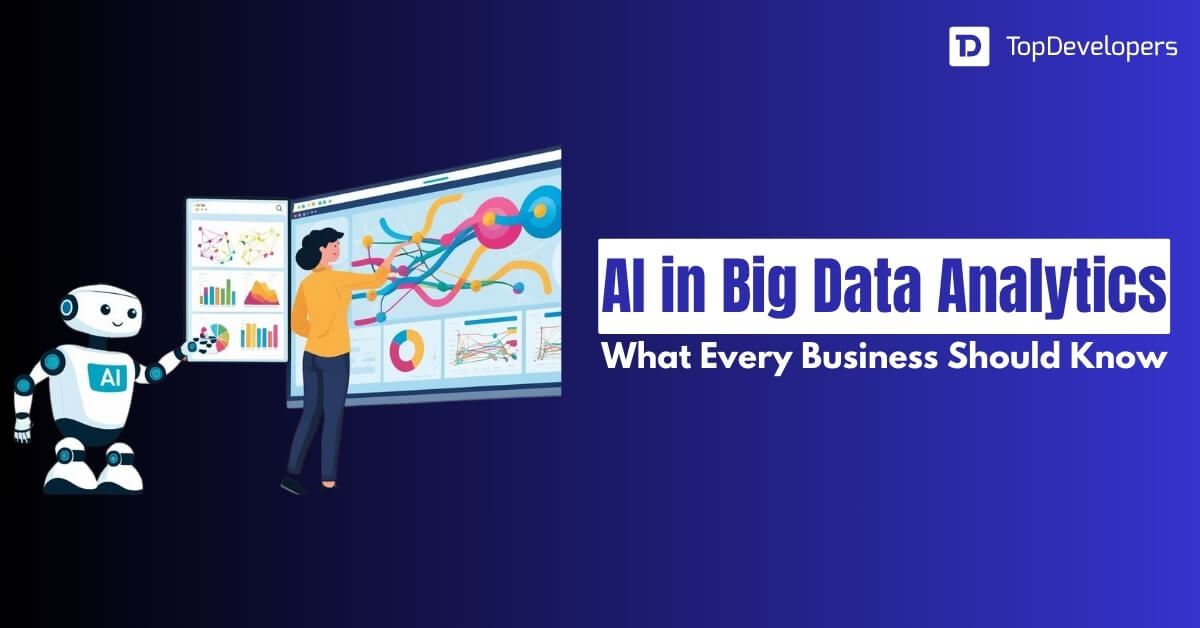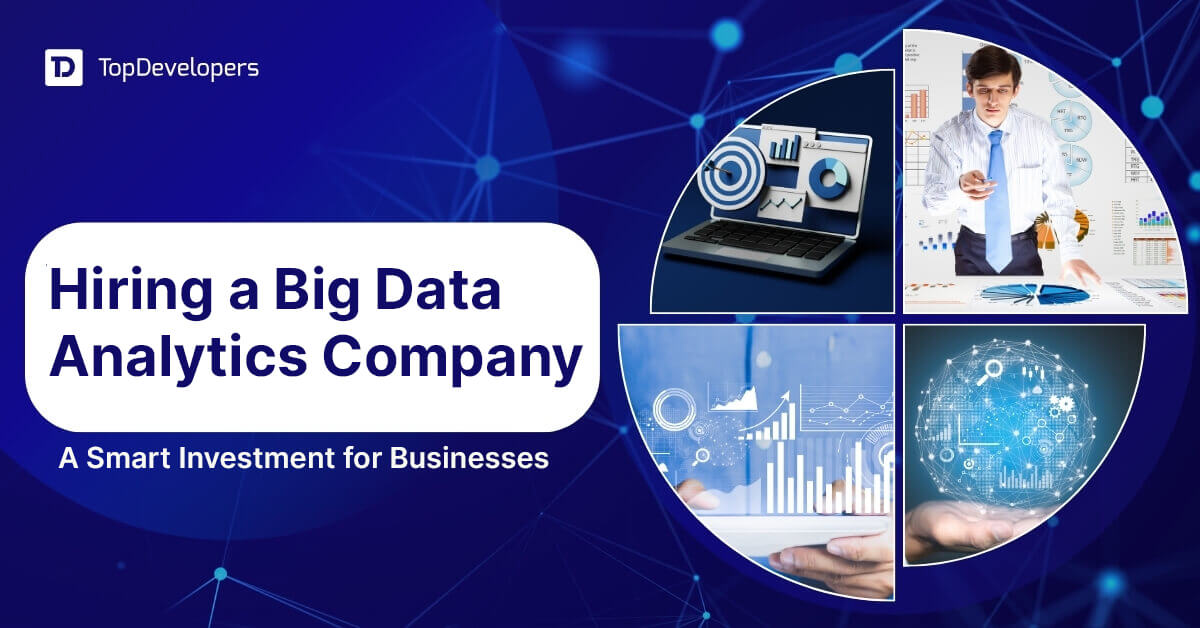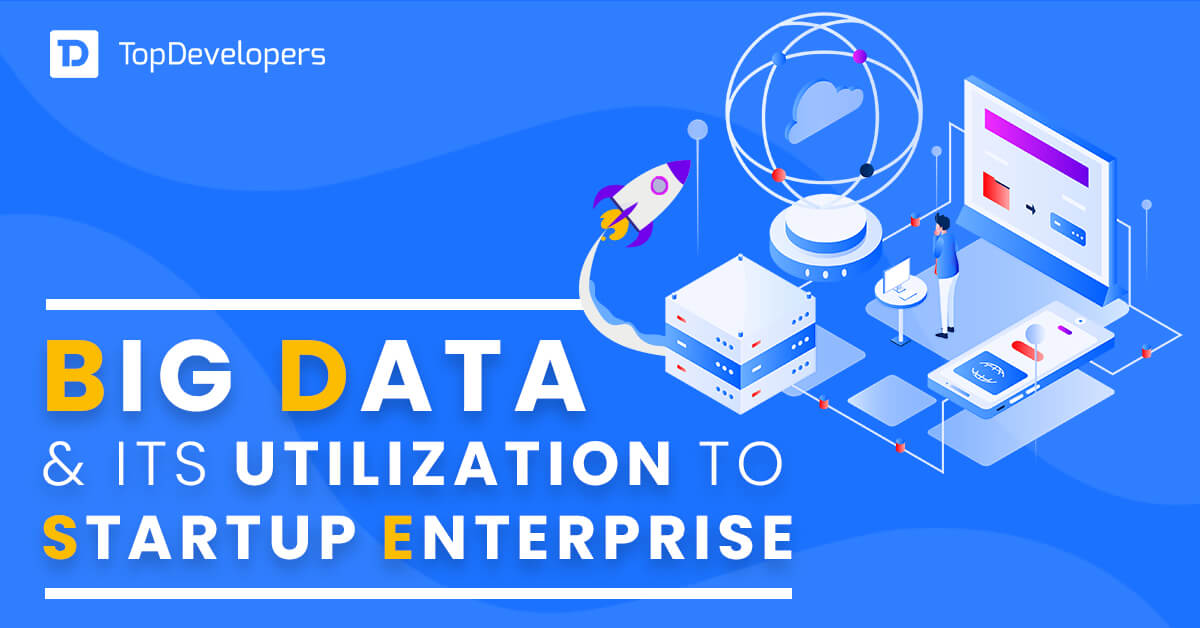
Big Data Analytics has opened a treasure trove of opportunities for businesses worldwide. Options previously unheard of have opened up, and enterprises have started analyzing the data related to their business to derive powerful insights, improve productivity, make data-driven decisions, and gain a competitive edge. The big data analytics market value will reach $655 billion by 2029.
Analyzing data collected at various points during the consumer’s interaction with the business is proving to be a vital tool in the arsenal of enterprises. When coupled with current big data analytics trends, the results are excellent for businesses.
Table of Contents
- Top Big Data Analytics Trends to Look Forward to
- Augmented Analytics
- Data Democratization
- Big Data Integration
- Real-Time Analytics
- Data Mesh
- Data as a Service (DaaS)
- Data Ethics
- Data-Centricity
- Conversational Analytics
- Quantum computing
- Natural Language Processing
- Hybrid cloud
- Data fabric
- XOps
- Streaming analytics
- Dataops
- Need for security
- Data lakes
- Data governance
- Predictive analytics
- Industry-specific job roles
- Cloud-based analytics solutions
- Data Automation
- Improved AI, but coupled with HI (Human Intelligence)
- IoT and Data Analytics
- In-memory computing
- Data as a Service Model
- Edge computing
- Dark Data
- Conclusion
Top Big Data Analytics Trends to Look Forward to
Big data analytics is continuously evolving, and staying updated with the latest trends is crucial for businesses to leverage data effectively in meeting their digital objectives. Here are big data analytics trends that will help businesses to achieve their goals:
Augmented Analytics
Augmented analytics utilizes AI and machine learning to automate data preparation, insight generation, and visualization. It empowers non-technical users to interact with data effortlessly, bridging the gap between technical experts and business teams.
Businesses leverage augmented analytics to uncover hidden patterns, identify opportunities, and make informed decisions faster. It supports predictive and prescriptive analytics, driving actionable insights across finance, retail, and healthcare industries.
Augmented analytics democratizes data-driven decision-making, enabling companies to extract maximum value from their data while enhancing operational efficiency and customer satisfaction.
Data Democratization
Data democratization is a transformative trend ensuring data accessibility for all stakeholders within an organization, regardless of technical expertise. By removing barriers to data access, it fosters a culture of informed decision-making and innovation.
Advanced tools like self-service BI platforms allow employees to analyze and interpret data independently, reducing dependency on specialized teams. This improves agility, collaboration, and responsiveness to market changes.
By empowering employees with data, organizations achieve faster decision-making, improved productivity, and a stronger competitive edge in a data-driven world.
Big Data Integration
Big data integration focuses on combining data from multiple sources into a unified system, enabling seamless access and analysis. It overcomes data silos, ensuring comprehensive insights that drive better business outcomes.
Companies implement integration platforms to consolidate data from IoT devices, cloud services, and traditional systems. This holistic approach supports real-time analytics, predictive modeling, and decision-making processes.
With robust big data integration, businesses improve operational efficiency, uncover cross-functional insights, and enhance the customer experience by delivering tailored solutions.
Real-Time Analytics
Real-time analytics processes data as it’s generated, allowing businesses to act instantly on emerging insights. This capability is crucial for applications like fraud detection, predictive maintenance, and dynamic pricing.
For instance, e-commerce platforms leverage real-time analytics to monitor customer behavior and deliver personalized recommendations. In healthcare, it assists in monitoring patient vitals for timely interventions.
By enabling immediate decision-making, real-time analytics enhances responsiveness, reduces risks, and creates opportunities for competitive differentiation.
Data Mesh
Data mesh is a decentralized approach to data architecture, promoting domain-oriented ownership and self-serve data infrastructure. It eliminates bottlenecks by distributing data responsibilities across teams.
This concept leverages a “data-as-a-product” mindset, ensuring data is easily discoverable, accessible, and reliable. Businesses adopting data mesh achieve scalability, agility, and enhanced collaboration.
Data mesh empowers businesses to harness the full potential of their data ecosystem, improving operational efficiency and driving innovation.
Data as a Service (DaaS)
Data as a Service (DaaS) revolutionizes data access by delivering it on demand via cloud-based platforms. It simplifies data sharing and analysis, reducing the need for complex infrastructure.
DaaS provides real-time data insights, enabling businesses to make agile decisions. For example, marketing teams use DaaS to gain up-to-date consumer insights for targeted campaigns. Financial institutions leverage it for risk management and compliance.
By adopting DaaS, organizations reduce costs, enhance scalability, and improve data accessibility, fostering better decision-making and operational efficiency.
Data Ethics
Data ethics emphasizes the responsible use of data, focusing on privacy, security, and transparency. As Big Data companies handle increasing amounts of sensitive data, ethical considerations are critical for building trust.
Companies implement robust data governance frameworks to ensure compliance with regulations like GDPR and CCPA. Ethical AI models and transparent practices foster accountability, reducing risks of misuse or bias.
By prioritizing data ethics, businesses enhance their reputation, ensure legal compliance, and build stronger relationships with customers and stakeholders.
Data-Centricity
Data-centricity shifts the focus from applications to the data itself, ensuring it remains the core asset across all systems and workflows. This paradigm supports better data governance, quality, and usability.
Businesses adopting data-centricity invest in scalable infrastructure and data modeling practices. This approach enhances collaboration, accelerates innovation, and ensures consistent data usage across departments.
By aligning processes and strategies around data, businesses maximize value extraction and position themselves for long-term success in a data-driven economy.
Conversational Analytics
Conversational analytics enables users to interact with data through natural language queries, making analytics accessible to everyone. Powered by AI, it allows instant insights without requiring technical expertise.
Businesses use conversational analytics in dashboards, chatbots, and virtual assistants to extract insights seamlessly. For example, executives can ask questions like, “What were last month’s sales trends?” and receive instant answers.
This technology democratizes data usage, reduces decision-making time, and fosters a culture of data-driven operations.
Quantum computing
Quantum computing is still in its early stages, and practical quantum computers capable of handling complex business applications have yet to be widely available. They have the potential to perform complex calculations significantly faster than classic computers, which helps accelerate data processing and analysis. The capability to enhance machine learning and AI algorithms helps businesses develop more accurate predictive models and recommendation systems.
Google has taken the first stride in this exciting area, and quantum computing will undoubtedly become a reality in the coming year. Quantum computing will be leveraged in many places, like: –
- Drug discovery and protein folding in healthcare
- Financial portfolio risk assessment and fraud
- Predicting the weather in real-time by analyzing the inputs from weather satellites all over the world
- Securing online transactions using quantum cryptography
- Optimizing energy consumption for various industries to improve sustainability.
Natural Language Processing
Natural Language Processing (NLP) is a well-known big data analytics trend primarily focusing on interactions between computers and human language. It enables machines to understand, interpret, and generate human-like text at the flick of the switch. It features sentiment analysis that facilitates analyzing social media posts, customer reviews, and feedback to determine sentiment and customer satisfaction.
NLP-powered chatbots and virtual assistants can respond instantly to customer inquiries, assist with everyday issues, and route complex queries to human agents. With voice-over customer capability, NLP allows businesses to extract insights from customer conversations, surveys, and call center interactions. It aces at auto-content generation, content recommendation, content moderation, email classification, research, and fraud detection.
By leveraging NLP in big data analytics initiatives, businesses can gain a competitive edge, improve customer experiences, make data-driven decisions, and extract valuable insights from unstructured text data, ultimately leading to better outcomes.
Hybrid cloud
Hybrid cloud is a popular trend in big data analytics that benefits businesses regarding flexibility, scalability, and cost-effectiveness. It allows enterprises to dynamically scale their big data analytics workloads, even during peak demand periods and scale back to private on-premises infrastructure. The pay-as-you-go approach for dynamic workloads reduces capital expenditures and provides cost predictability.
It enables businesses to manage data across on-premises and cloud environments, which helps in improving control over data and security. The facility to tailor a hybrid cloud environment allows businesses to meet specific security and compliance requirements as sensitive data is kept on-premises or in a private cloud. In contrast, the public cloud is leveraged for non-sensitive tasks. The robust data backup and disaster recovery capabilities ensure data resilience and business continuity in case of outages or failures.
Data fabric
Data fabric is taking center stage in popular big data analytics trends because of the data management, accessibility, and agility it offers to businesses. The unified view and management of data across various sources (on-premises, cloud, and edge environments) simplifies data governance, reduces complexity, and improves data consistency.
Seamless data connection among different data sources in distinct formats allows businesses to ingest, transform, and integrate data from diverse sources, which makes data available for analytics every time. Real-time data processing enables instant decision-making. The centralized and standardized data storage format makes searching and retrieving data easy.
Scalability, elasticity, data mobility, security, flexibility, and cost-efficiency make data fabric a holistic solution to address related changes.
XOps
As big data analytics becomes an essential business fabric, XOps enables better decision-making. The XOps aimed to bring efficiencies using the best practices provided by DevOps. With the blend of data, machine learning, model, and platform, XOps ensures reliability and reusability along with mitigation of technology and process duplication and enablement of automation.
When businesses look for scaling prototypes and a flexible design with governed decision-making, Xops helps seamlessly operationalize the data and analytics.
Streaming analytics
Streaming analytics involves real-time data analysis from various sources, such as IoT devices, social media, sensors, logs, and more. It facilitates real-time decision-making, which is invaluable in scenarios where timely decisions are critical, such as fraud detection, predictive maintenance, and supply chain optimization. It benefits different industry verticals in various ways.
Say the financial sector and e-commerce use streaming analytics to identify real-time fraudulent activities. It monitors transactions, user behavior, and network traffic to detect anomalies and potential data security threats. Manufacturing and healthcare use it to monitor product quality by analyzing real-time sensor data and production processes.
Dataops
DataOps is a growing trend in big data analytics and data management. It is an approach that combines principles from DevOps and agile methodologies to automate the processes involved in data integration, data quality, data delivery, and collaboration among data teams. It accelerates data delivery to analytics teams by automating data pipelines and reducing manual processes, essential for timely decision-making.
The automated data validation, cleansing, and transformation results in cleaner and more reliable data for analytics, which reduces errors and ultimately improves data quality. Agile data development practices allow quick responses to changing analytics requirements that facilitate the rapid development and deployment of data pipelines and models.
Also, automation and efficient data processes reduce operational costs and help businesses to allocate resources more effectively.
Need for security
As organizations increasingly rely on data for decision-making and operations, securing this data and the analytics infrastructure is paramount. Cybersecurity is a foremost trend in big data analytics that safeguards sensitive data from theft, unauthorized access, and data breaches. Advanced cybersecurity tools and technologies can detect and prevent cyber threats, including malware, ransomware, phishing attacks, and other malicious activities.
The encryption techniques, both in transit and at rest, protect data from unauthorized access during transmission and while stored in databases. The IAM solutions enhance user authentication and manage access to data and analytics platforms. Regular vulnerability assessments and patch management practices reduce the attack surface for fraudsters.
Data lakes
Data lakes are centralized hubs to store, manage, and analyze vast volumes of structured, semi-structured, and unstructured data in silos. They are scaled horizontally and vertically to accommodate large and growing datasets without significant infrastructure changes. It is the foundation for advanced analytics, including machine learning, artificial intelligence, and predictive modeling.
Data lakes are cost-effective storage solutions, enabling storing data on distributed file systems or cloud-based object storage. Similarly, it facilitates inexpensive data processing using distributed computing frameworks like Apache Spark and Hadoop. When there is a need of storing and analyzing time-series data, such as sensor readings, logs, and financial data, data lakes do it.
Data governance
Data governance encompasses the policies, processes, and practices that ensure high data quality, data management, security, and business compliance. It helps maintain data consistency by establishing data standards and definitions, which allows target users to understand and trust the data. Data governance provides transparency into data lineage so businesses can track the origins and transformations of data, which helps troubleshoot data issues.
It helps businesses adhere to regulatory requirements, industry standards, and data protection laws such as GDPR, and HIPAA, which minimizes risks associated with non-compliance. On the other hand, it provides security measures and access controls to protect sensitive data from unauthorized access and breaches. It supports data auditing, enabling businesses to track changes to data and maintain an audit trail.
Predictive analytics
Global predictive analytics is estimated to reach an unbelievable figure of $22 billion by the end of the year 2026. The term predictive analytics is self-explanatory. These advanced analytics will assist the business organizations in creating exhaustive and comprehensive reports of their performance.
Business organizations are carrying out data mining and predictive marketing using this big data analytics trend and are eliminating the bottlenecks in their internal processes. The growth of predictive analytics is a result of the increased usage of digital transformation tools in the world.
Information is the oil of the 21st century, and analytics is the combustion engine. – By Peter Sondergaard
Industry-specific job roles
As the number of industries adopting Big data increases, there is a rising demand for specialist in big data analysis. The leading big data analytics companies understand the fact that people who have worked in the industry will be in a better position to recognize the process and gain more powerful insights by applying Big Data Analytics technologies.
For instance, a production engineer who is working on the production floor of an automobile company can prove to be a much more useful resource for a Big Data company specializing in designing big data solutions for the automobile industry.
Cloud-based analytics solutions
Businesses are changing t their work process and going remote instead of depending on traditional systems. The cloud-based analytics solutions have been the saviour of business organizations across the globe.
The cloud-based analytics solutions do not require any build infrastructure or the company to have its own data centers. The data in the cloud will be easily accessible from any part of the world and the user can even control the access rights of the tool for data security.
Big data and cloud-native solutions will render a competitive advantage to the business houses as they are highly flexible and efficient. Moreover, with the rise of remote and hybrid working environments, cloud-based analytics solutions have become mainstream. Besides facilitating remote and hybrid working environments, it will help organizations to cut down costs associated with traditional methods.
Data Automation
Analyzing Big Data is costly as it requires utilizing the services of specialized resources called data scientists who are experts in statistics and maths. The shortage of resources has given rise to the trend of companies moving towards data automation. By leveraging the power of AI and machine learning, Big Data automation has substantially reduced the time taken to analyze a vast data set.
These data automation systems are expected to gain prominence because they are faster and cheaper. Data automation also helps the data analysts in testing specific scenarios that they might not have otherwise considered.
Data automation models are especially useful for “citizen data scientists”. These are people without high-level technical skills who can perform moderately tricky tasks. Thus, aiding them helps the organization in growing by effectively utilizing the power of Big Data Analytics.
Data automation models are expected to accelerate the adoption of data-driven cultures by giving power in the hands of laymen.
Improved AI, but coupled with HI (Human Intelligence)
According to a study by Gartner, Artificial Intelligence (AI) will enable better learning algorithms and impenetrable systems that are smarter and more efficient. Startups and business houses all over the world will need more AI and its associated technologies. But in the quest of doing this, they would need to find ways to scale these solutions. And this is where human intelligence will come in crucial.
Artificial Intelligence will continue to develop, but it will take time to come close to human intelligence. Thus, HI will also be considered into account.
IoT and Data Analytics
The data, collected by these IoT devices, is of little use without the use of Data Analytics, which will sift out valuable insights from the data collected by these devices.
IoT is already being used in many places to provide exciting insights into consumer behavior. For instance, IoT-connected coffee makers are providing invaluable insights to manufacturers of these machines like how many cups of coffee does an average person makes during a day, and whether the coffee consumption is higher during the weekdays or the weekends.
IoT is being used in the domain of sentiment Analytics, which pertains to studying the interaction of users with a brand on social media. IoT sensors are being deployed in fashion shows and in basketball league games to gauge the level of engagement of the audience with the event.
These sensors provide data to the Big Data Analytics algorithms, which then determine the level of human engagement by analyzing the changes in the emotions of the audience. Human emotions are measured using a variety of sensors and AI, which include gyros, high-speed video cameras (to detect facial expressions), Accelerometers, Audio, Heart rate Sensors, and Skin conductance Sensors, to name a few. Then this data is analyzed using complicated AI systems.
The sophistication level of these sensors will increase, and we will see many more such exciting applications, which would be a result of the combination of IoT and Big Data analytics.
In-memory computing
Usually, Data is stored in the database on the SSDs. In in-memory computing, the software is used to store data in RAM across a series of computers. This is done to improve the processing speed of data as RAM is around 5000 times faster than an SSD.
In-memory computer systems thus allow for the processing of data at lightning speeds and are ideal for applications that involve handling a sudden increase in the number of queries.
An ideal application would be handling the data of a relative gaming leaderboard. Usually, gaming leaderboards show the top positions in a game. A relative gaming leaderboard is slightly different; it shows the relative position of gamers with respect to many parameters.
For instance, it can show the relative position of players with similar skill levels. Having a relative gaming leaderboard boosts the engagement level of the users with the game and helps in popularizing it. Standard systems are unable to meet the high data processing requirements of such an application. In this scenario, in-memory computing systems can come to the rescue and help in providing real-time positions of gamers in a leaderboard.
In-memory computing can prove useful in any application that requires a database to handle a massive number of queries quickly. A few potential applications can be GIS processing, medical imaging processing, NLP and cognitive computing, Real-time sentiment analysis, and real-time ad platforms.
Data as a Service Model
The primary function of Big Data Analytics is to derive meaningful insights by analyzing tons of data. While most companies do recognize that Big Data is going to play a vital role in the future, many do not have the required level of expertise in analyzing the data that they have. This presents a massive opportunity for companies providing Big Data as a Service (BDaaS).
The BDaaS model will be used in many applications in the future, like predicting fashion trends, anticipating the turnover ratio of employees, and helping in detecting bank fraud.
Edge computing
As the population of IoT devices grows, so does the need for quickly analyzing the humongous amount of data produced by these devices. Edge computing can prove to be very helpful here.
Edge computing is the concept of processing data generated by IoT devices near its source. In many applications, the speed of data processing is of paramount importance, for instance: – giving real-time data during an F1- Racing event. In such applications, edge computing provides an ‘edge’ above the cloud computing model.
Apart from IoT, edge computing also provides benefits in applications where there are significant privacy concerns. As the Data is not uploaded to the cloud, this plugs in a potential security loophole. Edge computing also proves to be a boon in applications where there is a connectivity issue. This big data trend is already being used in smart building solutions, and it is expected that in the near future, as the number of IoT devices increases, edge computing will emerge as a viable solution for many applications.
Dark Data
Dark Data is a kind of data that was previously unutilized by companies. With the rise of Big Data Analytics, previously unheard uses of dark data are being explored.
For instance, the research found out data relating to the population of zooplankton during the 1970s and ’80s and used it in analysis related to climate change.
Dark data can be utilized by using a data virtualization technique, which is a technique in which all the data of a particular company is presented in a single dashboard in an easily digestible form. Thus previously unutilized data of a company can provide invaluable insights that can ultimately help in improving the bottom line of a company.
In-depth data analysis can help in analyzing vulnerable population groups and assist in predicting the next outbreak of a disease.
Many companies do not know that they already have data, which can help them in analyzing the needs of their customers and help in increasing revenues. Dark Data is going to play a pivotal role in future Big Data Analytics.
Conclusion
Without big data analytics, companies are blind and deaf, wandering out onto the web like deer on a freeway. – By Geoffrey Moore, an American Management Consultant and Author
Big Data has already breached the levels of our imagination by helping in building the first humanoid robot- Sophia, in discovering black holes and in autonomous cars.
The possibilities of Big Data Analytics are exciting; we are fast moving towards becoming a data-driven society. Big Data Analytics has already proven its worth in many sectors like banking, retail, manufacturing, shipping, and logistics. With the advent of technologies like edge computing, in-memory computing, and quantum computing, the horizon of Big Data Analytics is going to expand exponentially.
Rebecca Harrison combines her love for emerging technologies with her ability to explain them in clear, concise terms. With expertise in blockchain, IoT, cloud computing, big data, and cryptocurrency, Rebecca’s articles are essential reads for tech-savvy audiences. She has worked closely with tech startups and established companies to explore the potential of these transformative technologies.
